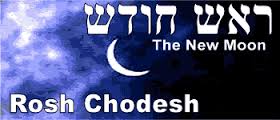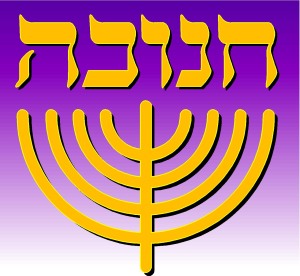The Babylonian date is the 1st of Kislev, 5774.
The Pagan date for America will be 4th of November, 2013.
YHVH date for this time period will be 1/9/5774.
Sources of reference:
http://www.OU.org.
http://www.hebcal.com/converter/?gd=4&gm=11&gy=2013&g2h=1
http://www.jewishvirtuallibrary.org/jsource/History/Maccabees.html
The name “Kislev” is of Babylonian origin.
In the Tanach (Bible), Kislev is referred to as the ninth month, as it is the ninth month after Nissan. Although most famous for having Chanukah within it, Kislev is also a month with significant Biblical happenings.
So what are these significant Biblical happenings?
Did you know that the first rainbow, observed after the Flood, was seen in Kislev? “And Elohim said: ‘This is the sign of the covenant which I set between Me, and yourselves, and between every living being that is with you, unto eternal generations. I have placed my bow in the cloud, and it shall be a sign of a covenant between Me and the Earth. “This is the sign of the covenant” – Elohim showed Noah the bow and said to Him: “This is the sign of which I spoke” (Bereishit 9). It is the “Rainbow”. Elohim created the Rainbow as a sign of His covenant between Himself and the earth. The Rainbow has nothing to do with the LGBT movement!
Did you know about the Maccabees (166-129 BCE)?
King Antiochus, who has already conquered many countries, decides in the 23rd year of his reign to destroy the Jewish people, because it adheres to another law and other customs and secretly dreams of dominating the world. He sends to Jerusalem his commander in chief Nicanor, who instigates a massacre there, sets up an idol in the Temple and defiles the entrance hall with pigs’ blood. On the pretext of being willing to submit to Antiochus’ commands, *Jonathan, a son of the high priest Mattathias, gains a secret audience with Nicanor, and kills him with a sword concealed under his robe; he then attacks Nicanor’s army, which is now without a leader, and only a few of the soldiers succeed in escaping and returning by ship to Antiochus. In commemoration of the victory, Jonathan has a pillar erected in the town, bearing the inscription “The Maccabean has killed strong men.” Antiochus then sends to Jerusalem a second commander, Bagris; he metes out a terrible revenge upon the town and upon those Jews who have returned to the faith (here the scroll includes the story related in I Macc. 5:37–40 and II Macc. 6:16 of the devout people in the cave who were killed on the Sabbath because they would not fight to defend themselves). Jonathan and his four brothers defeat Bagris, who escapes and returns to Antiochus. He is equipped with a new army and armored elephants and then makes an attack on Judea. Judah Maccabee now appears in the story for the first time; and Jonathan, the third son of Mattathias, henceforth remains in the background. At the news of Bagris’ approach, Judah proclaims a fast and calls for prayers in Mizpah (cf. I Macc. 3:46ff.); the army then goes into battle and wins several victories, though it pays for them with the death of its leader. Now old Mattathias himself assumes command of the Jewish soldiers; the enemy is decisively defeated, and Bagris is taken prisoner and burned. When Antiochus is told the news, he boards a ship and tries to find refuge in some coastal town; but wherever he arrives he is greeted with the scornful cry: “See the runaway!” so that finally he becomes desperate and throws himself into the sea. At this same time, the Jews are reconsecrating their Temple; while searching for pure oil for the lamp, they find a vessel bearing the seal of the high priest and dating back to the time of the prophet Samuel. By a miracle the oil, which is sufficient in quantity for only one day, burns in the lamp for a full eight days; and this is why Ḥanukkah, the festival commemorating the reconsecration of the Temple, is celebrated for eight days.
And finally, what do you know about Ḥanukkah?
The festival is observed by the kindling of the lights of a unique candelabrum, the nine-branched Menorah or Hanukiah, one additional light on each night of the holiday, progressing to eight on the final night. The typical Menorah consists of eight branches with an additional raised branch. The extra light is called a shamash (Hebrew: שמש, “attendant”) and is given a distinct location, usually above or below the rest. The purpose of the shamash is to have a light available for practical use, as using the Hanukkah lights themselves for purposes other than publicizing and meditating on the Hanukkah is forbidden

